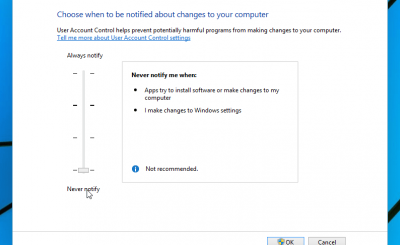Have you ever noticed two blue arrows on your Windows 10 files and folders? These two arrows indicate that Windows 10 is compressing those files and folders to reduce their overall size on your hard drive.
Windows 10 automatically compresses files when your hard drive starts to fill up, which is why you’ll suddenly notice these two blue arrows appear.
However, you can stop automatically compressing files in Windows 10. Here’s how.
How to turn off Windows 10 file compression in File Explorer
The easiest way to turn off automatic file compression in Windows 10 is through File Explorer. Compression can be applied to files, folders, or entire drives. When you apply or remove compression from a folder or drive, you can make changes in entire folders, compressing (or decompressing) every file in each sub-folder.
Disabling file compression in Windows 10 is a quick process. First, go to the folder or drive where you want to stop auto-compression. Later:
1. Right-click on the folder and select Properties.
2. In the tab General, choose Advanced to open Advanced Attributes.
3. In Compress or Encrypt attributes, unchecked Compress contents to save disk space.
4. Press OK, then press the button Apply.

When the window Confirm Attribute Changes appears, you can decide to only apply file compression changes to this directory (Apply changes to this folder only) or for folders, subdirectories and other files (Apply changes to this folder, subfolders, and files). The second option is useful when you want to stop Windows 10 from automatically compressing an entire drive or folder.

How to re-enable the Windows 10 file compression feature
Re-enabling file compression is as easy as disabling it. Go back to the steps above, but check the box Compress contents to save disk space. You will also see the same window Confirm Attribute Changes.
Compress files on Windows 10 with Command Prompt
You can also compress and decompress Windows 10 files and folders using Command Prompt and command compact.
First, go to the folder you want to compress, then press Shift + Ctrl + Right click and choose Open command window here.
Now, you have several different commands for compressing files. To compress a file, use the following command:
compact /c filenameTo compress all the files in the directory, use the following command:
compact /c *Finally, if you want to compress every file in this directory, along with any subdirectories, use this command:
compact /c /s *If you want to use the Command Prompt to extract your files, the commands will be similar. The following commands are used to unzip a file, all files in a directory. all files in this directory and its subfolders:
compact /u filename
compact /u *
compact /u /s *You can find a complete syntax list on the Microsoft Compact page or by using the command compact /? to see the list.
https://docs.microsoft.com/en-us/windows-server/administration/windows-commands/compactTurn off file compression using Group Policy
Let’s say you want to take the task of stopping the file compression one step further. That is to ensure Windows 10 will never compress your files without permission again.
If you want that, you can disable NTFS file compression using the Group Policy Editor. Group Policy is a Windows function that applies a configuration option to the entire system. You make changes to policies using the Group Policy Editor.
Group Policy Editor is not available by default for Windows 10 Home users. However, Windows 10 Home users can enable the Group Policy Editor option or use a third-party policy editor.

Follow these steps to disable NTFS file compression using Group Policy Editor:
1. Press Win + R to open the dialog box Tremor, then enter msc and press Enter.
2. When Group Policy Editor loads, go to Computer Configuration> Administrative Templates> System> Filesystem> NTFS.
3. Open the policy Do not allow compression on all NTFS volumes to edit it.
4. Select Enabled If you want to stop all file compression, then select Apply.
5. Restart your computer for the changes to take effect.
To disable this function in the future, repeat the steps above but instead, disable the policy (select Disable).
Hope you are succesful.
Source link: How to turn off file compression in Windows 10
– https://techtipsnreview.com/





